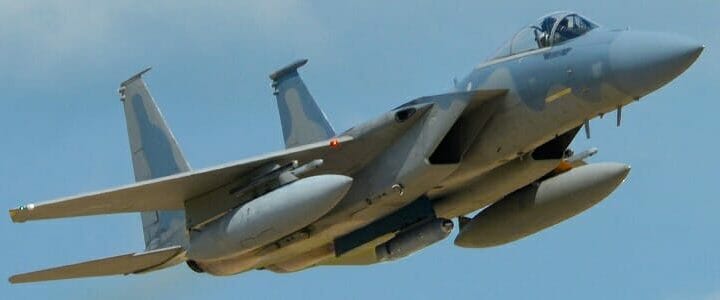Last week the Department of Defense Inspector General confirmed that it was opening an investigation into Acting Secretary of Defense Patrick Shanahan regarding allegations that he is using his position to influence defense procurement programs in favor of his former employer, Boeing. The investigation follows a complaint from the Citizens for Responsibility and Ethics in Washington (CREW).
The day after CREW filed its complaint, Sen. Richard Blumenthal, D-Ct., asked Shanahan in an open hearing about Boeing’s troubled 737 Max 8 and 9 aircraft, currently grounded over safety concerns. Consistent with the ethics agreements Shanahan has signed to ensure he stays out of Boeing decisions, he testified that he had not spoken to anyone in the administration regarding the planes, nor had anyone briefed him on the issue.
Blumenthal then asked Shanahan if he’d welcome an investigation into CREW’s allegations. Unfazed, Shanahan said he would indeed welcome the probe. After reading CREW’s complaint, Shanahan is right to welcome this investigation, because he’s got nothing to hide.
What has CREW alleged?
Lawyers know exactly how to write documents that will pique the interest of investigators. CREW’s lawyers are earning their keep. But beneath what I’d call hyperventilating and pearl-clutching, there’s not much substance. The biggest supposed violation that CREW can come up with is the administration’s decision to request funds for eight F-15X fighters. Air Force officials didn’t really want to put any money into fourth-generation fighters, preferring to keep all their eggs in the F-35’s basket.
The Pentagon’s decision to buy F-15X aircraft means that it will replace current aging F-15C/D aircraft with a plane other than the new F-35, or another aircraft like the F-16, built by… Lockheed.
The fourth-generation Boeing-built F-15X is not stealthy like Lockheed Martin’s fifth-generation F-35, but it can still carry a larger payload than the F-35 and can fly at speeds up to Mach 2.6, just a tick under 2,000 miles per hour. Despite the fact that the basic design is as old as I am (it was originally conceived in 1967), the fighter, in its updated version, still has a role delivering large payloads of standoff weapons like the AGM-158 JASSM-ER (short for Joint Air-to-Surface Standoff Missile-Extended Range) built by… Lockheed.
Apparently, Shanahan hasn’t been shy about voicing his displeasure with Lockheed’s performance on the F-35 contract. But who in Washington hasn’t? The program is literally the most expensive weapons system program in human history, and has faced years of delays and cost overruns. But saying “we wouldn’t have done it that way at Boeing” is not the same thing as telling your subordinates to run out and buy Boeing planes instead. Anyone who thinks otherwise really doesn’t understand defense acquisition.
A healthy Industrial Base is important
Late last week, a Pentagon official spoke to several reporters on background regarding the F-15X decision. Directly addressing CREW’s allegations, the official stressed that Shanahan played no roll in the decision, and that the office of Cost Analysis and Performance Evaluation drove the decision. CAPE decided that a healthy industrial base was as important as procuring the latest, greatest fighters.
There are five main fighter aircraft in the U.S. inventory: the F-15, F-16, F/A-18, F-22, and F-35. The F-15 and F/A-18 are built by Boeing. The others are built by… Lockheed. Sense a pattern? There are only two U.S. fighter aircraft manufacturers, and it’s in the country’s best interest to keep them both operating. The decision is little different than when Congress overruled the Army to keep the Lima, OH tank plant active. Preserving the capability to build critical things is sometimes more important than the added cost of buying the items.
If CREW really wanted to point out a case where political considerations outweighed the military brass’s wishes, it need look no further than Boeing’s KC-46A tanker contract. In 2008, the Air Force chose the KC-30, a joint venture between Northrop Grumman and EADS, the European manufacturer that also owns Airbus, Boeing’s biggest competitor in the commercial market. The decision to recompete the award was driven as much by the pressure from Democratic Congressman Norm Dicks, whose district included Boeing’s headquarters, as it was by Boeing’s GAO protest.
I will refrain from diving deeper into CREW’s supposed nonpartisan status. (Hint: they’re really not all that impartial). I will only say that there’s plenty of defense business for everyone, and CREW would be better serving its donors by focusing on actual ethical violations. Patrick Shanahan gave up his 31-year career as a Boeing executive to answer a call to serve his country. You can disagree with his decisions without making it personal.



